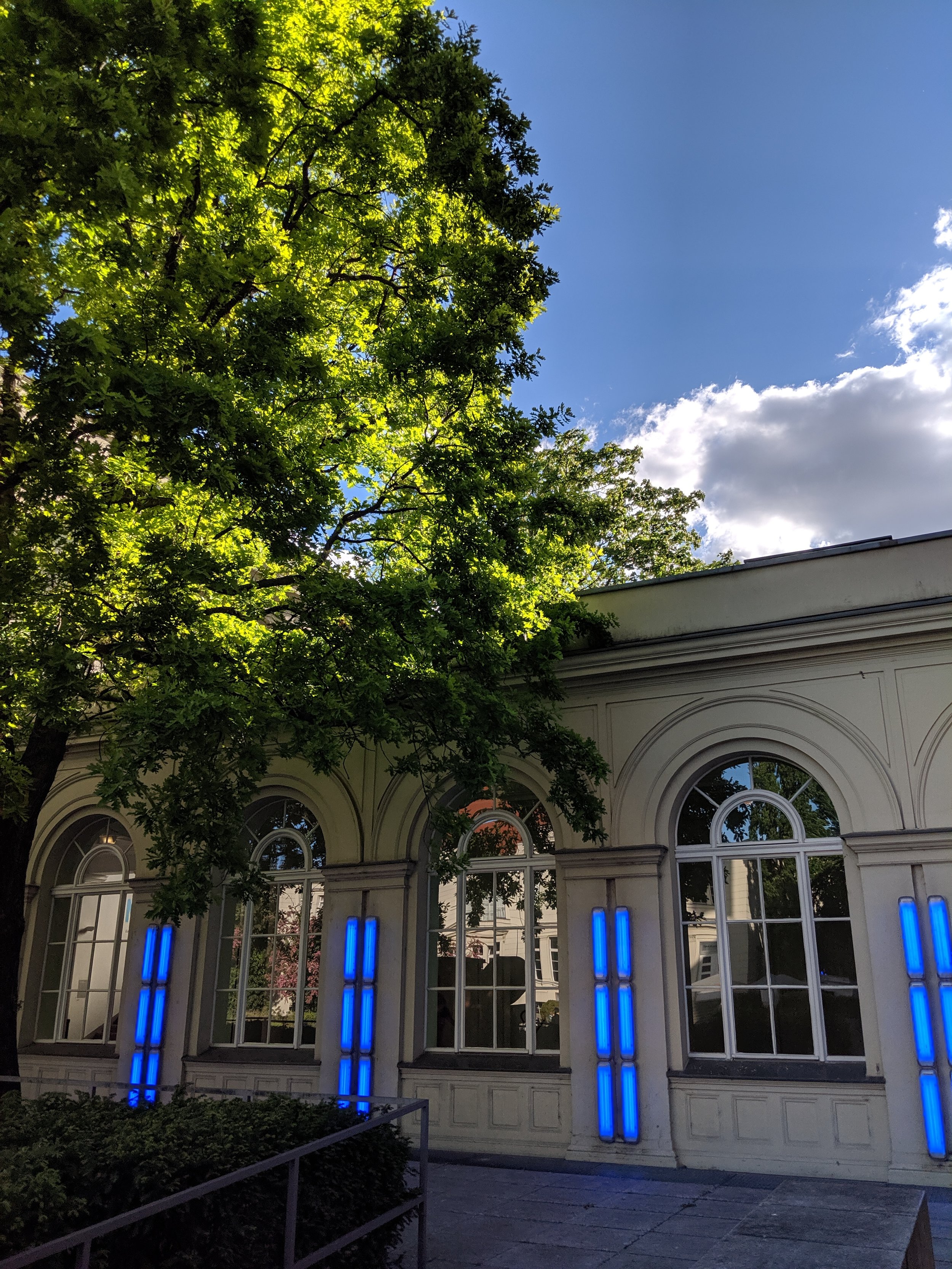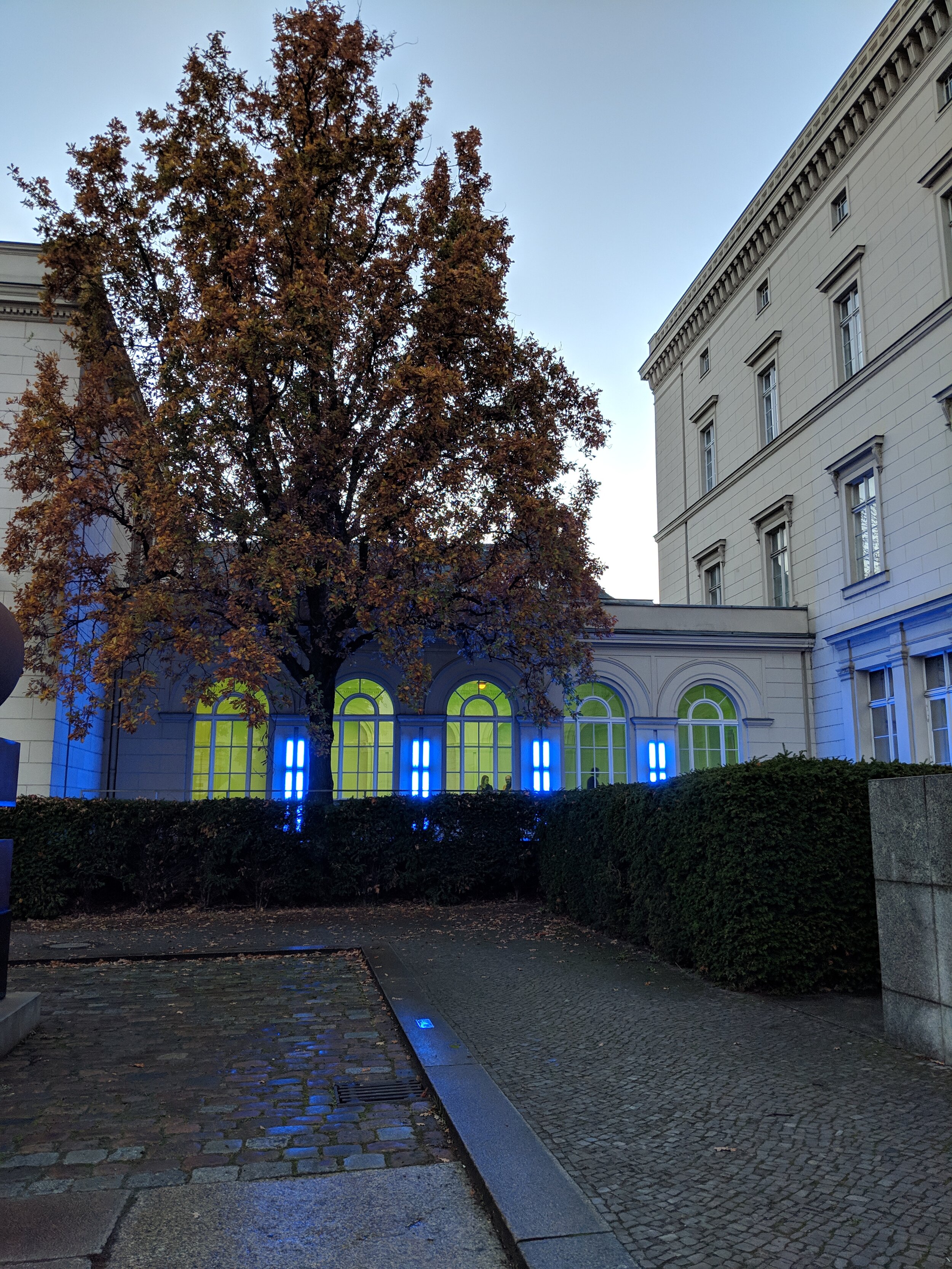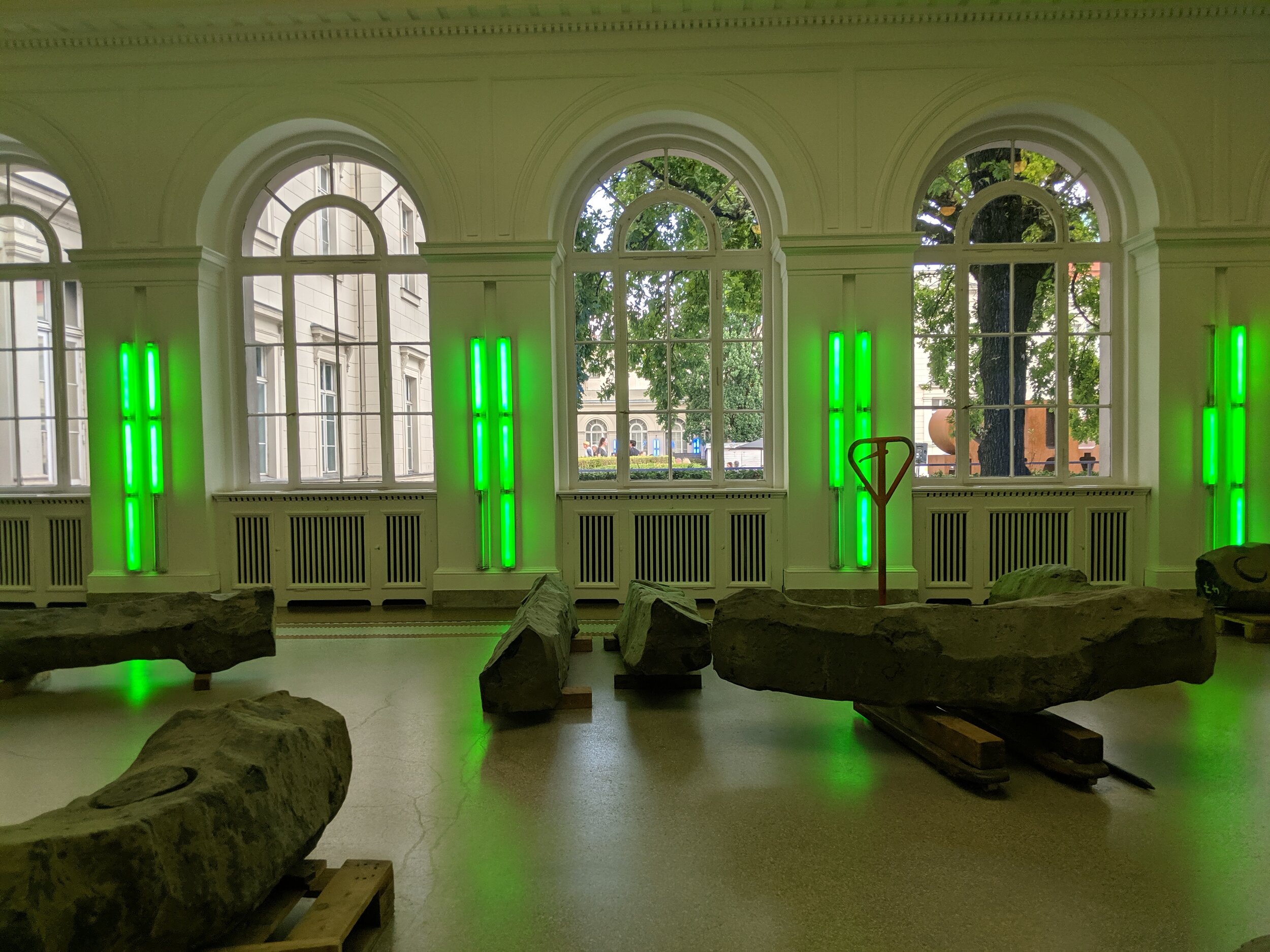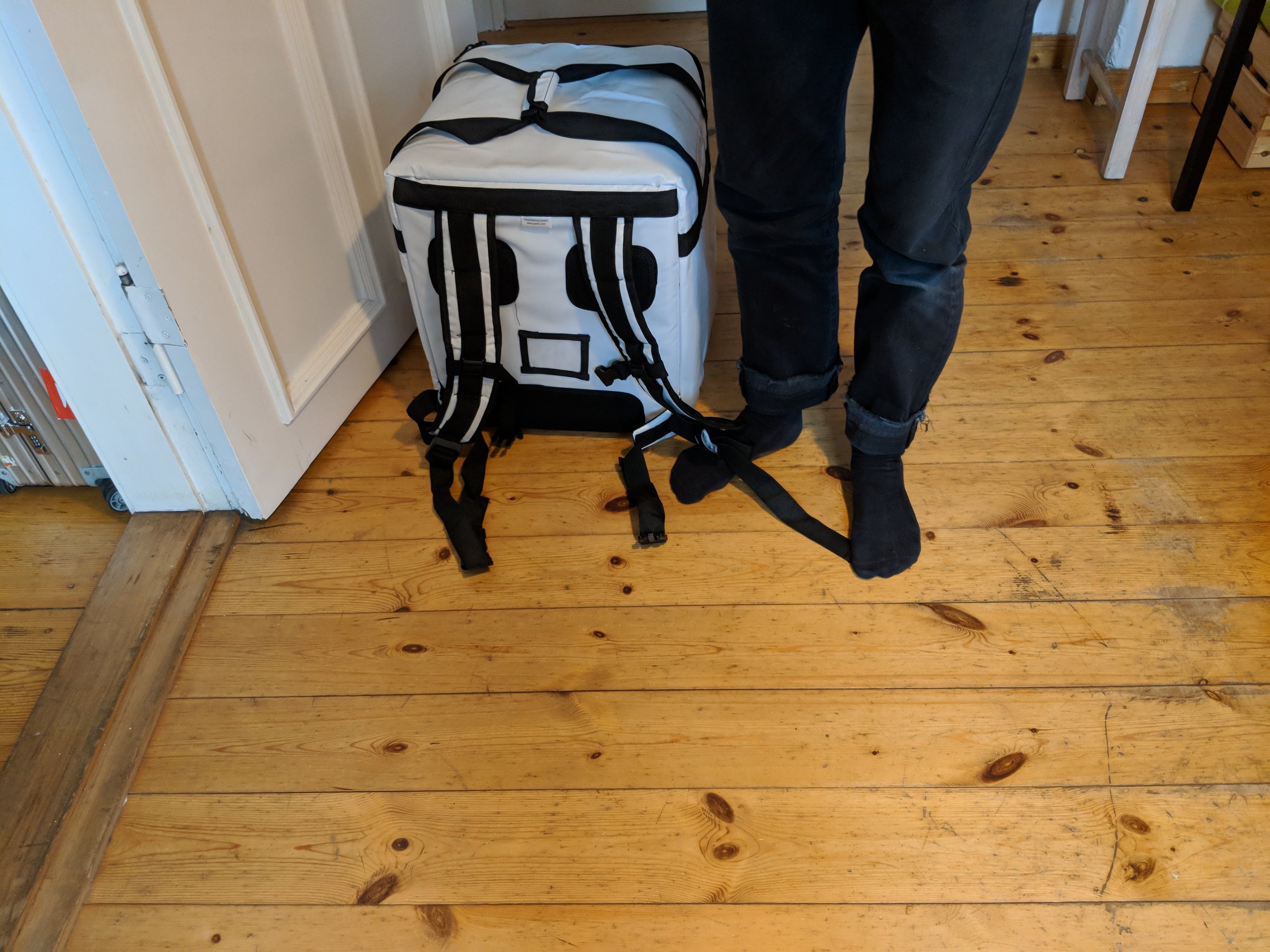Dan Flavin at Hamburger Bahnhof

Dan Flavin was an American minimalist artist. One of the pioneers in his field actually. He has laid the groundworks for a majority of artists today that use light in their artwork. More than anything, his light sculptures create a strong mood in the space that they are placed in. What makes Flavin stand out is the scale of his works, and despite his general preference to create site-specific larger installations, his smaller works don’t fall short in any way when it comes to the ambiance. His smaller works are mostly designed to be placed in the corners of a gallery. The idea behind placing his works in the corners of art spaces is to bring softness to the space he is working with. It is important to note that corners such as these are often left bare in art galleries so displaying Flavin in an exhibition always brings joy to the curator, as it allows them to know where they will be placed immediately, or at least narrow down the options to, well, corners. Flavin’s manipulations of space with the fluorescent tubes often leaves the viewers wondering. The artist himself stated, that his works are meant to be seen objectively, and serve a purely aesthetic purpose. The way in which he manipulates reflected light is intentional and masterfully executed, and it is part of how he builds space. It is also a reason why his sculptures work well when placed in corners, as it directs reflected light in such a way that a whole new spectrum of colours is created. He is like an architect of light.
Flavin designed sculptures but didn't produce them until someone purchased them. As a result, he left behind design sketches for more than 1000 sculptures when he died in 1996. As a minimalist, Dan Flavin defined the movement through his use of limited materials. This limitation also introduced the idea of impermanence to his work and legacy. Fluorescent light bulbs have a tendency to burn out, so even within the collectors of his work, turning on their Flavin is a sort of performance in itself. Among the artists inspired by Dan Flavin are the famed James Turrell and Olafur Eliasson.
Hamburger Bahnhof has quite an interesting collection of Dan Flavin’s work. The museum itself is an old railway station. The building was refurbished and reopened as a contemporary art gallery in 1996 by an architect Jan Kleihues, and was opened with an exhibition by a German painter - Sigmar Polke. Over time, the museum collected a significant amount of contemporary art. This includes a light installation, blue lights in the middle and green neon lights on the sides, specially designed for the neoclassical facade as well as the historical side wings of the gallery. Dan Flavin preferred working on site-specific sculptures, so the facade of Hamburger Bahnhof is a remarkable example of his later works. Within the space, you will see Flavin’s work masterfully balanced and scattered around with other artists such as Joseph Beuys, Andy Warhol, and Marcel Duchamp, who were all highly admired by him.











